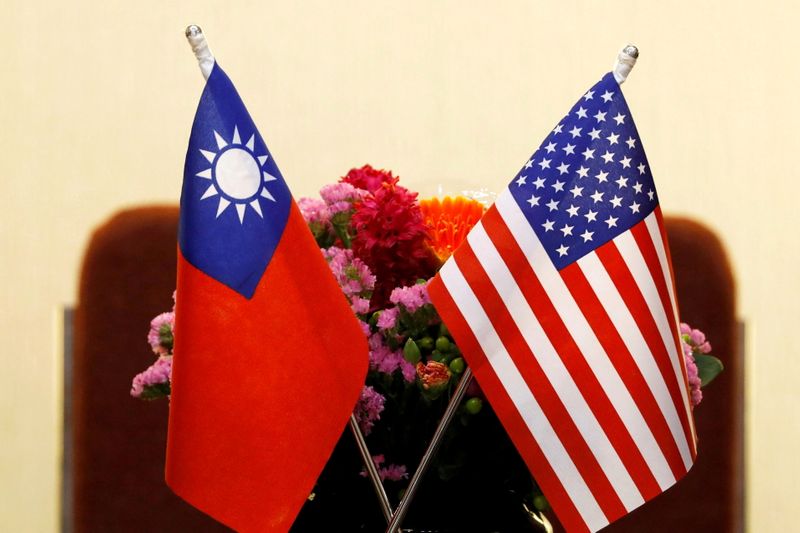TAIPEI (Reuters) - Taiwan's trade surplus with the United States is due to the China-U.S. trade war and pandemic driving tech demand, a central bank official said on Friday, after the U.S. Treasury said the island continued to exceed its currency manipulation thresholds.
The Treasury, in its semi-annual currency report, said no major U.S. trading partners sought to manipulate their currencies for a trade advantage or for preventing effective balance of payments adjustments during the year through June 2021.
But it said that Taiwan, along with Vietnam, exceeded its trade surplus, current account and foreign exchange intervention thresholds, and it will continue to work with them to address U.S. concerns.
A Taiwanese central bank official, speaking on condition of anonymity, told Reuters it would continue to communicate with the United States and that the two sides were always in communication.
Taiwan's trade surplus with the United States exceeded $20 billion last year as the China-U.S. trade war and COVID-19 pandemic saw demand for made-in-Taiwan communication devices soar, with exports of those goods exceeding $10 billion, rather than because of exchange rate reasons, the official added.
"This is our main point when we communicate with the U.S. side," the official said, reiterating what Taiwanese officials have said previously about the trade imbalance.
The trade war has seen tech companies in particular shift some manufacturing away from China to avoid U.S. tariffs and political problems, while the work and study from home trend during the pandemic had boosted demand for laptops, tablets and smart phones.
Taiwan is a global hub for semiconductor production and a key supplier to Apple Inc (NASDAQ:AAPL) and other tech giants.

The Taiwan dollar's 5.6% gain against the greenback last year was among the strongest in Asia. It is up more than 2.5% against the greenback this year and among the best-performing Asian currencies.
Taiwan was last formally labelled a currency manipulator by the United States in December 1992. It was put back on the monitoring list in 2020.
